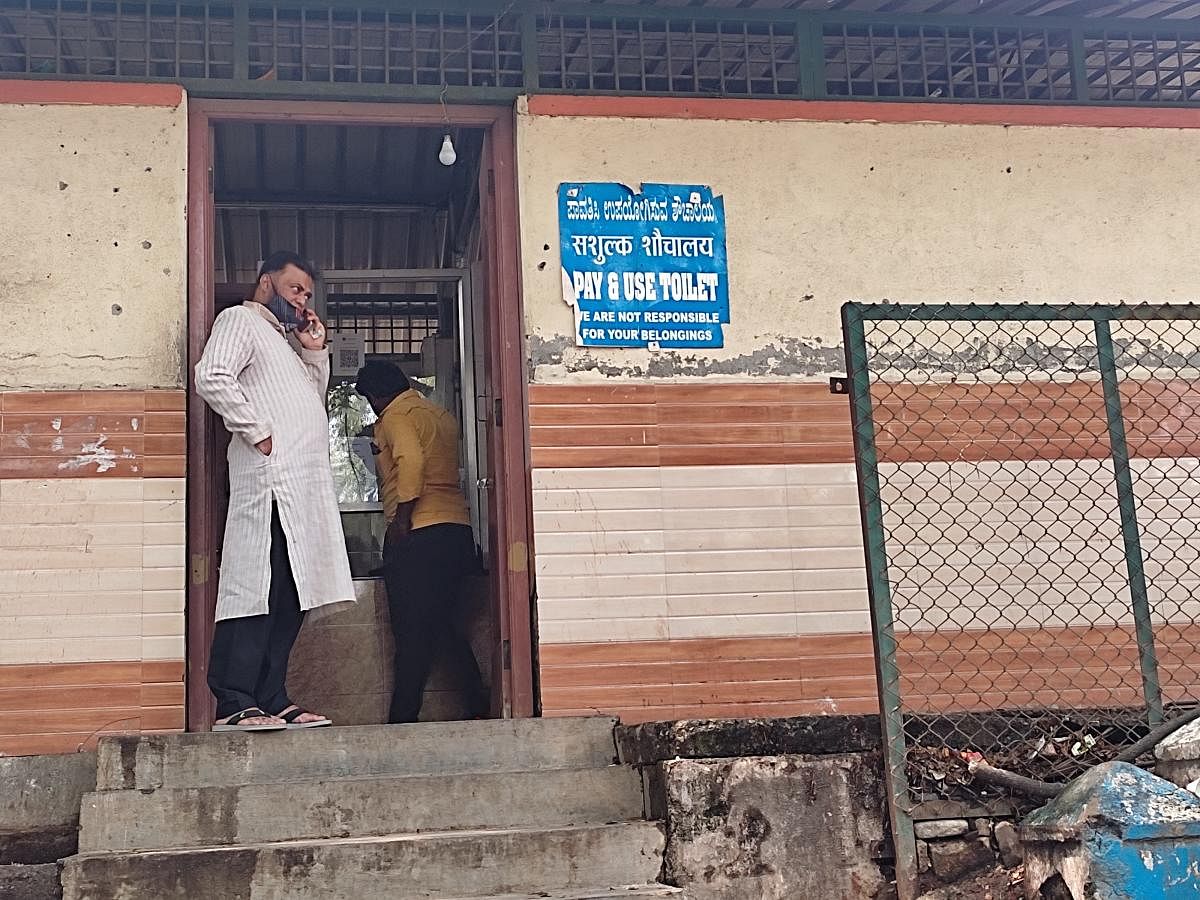
Currently, BBMP has 401 functioning pay and use toilets, of which 82 are e-toilets. Most of these are in an unclean and unmaintained condition.
While maintenance of the toilets has been delegated to various private agencies and non-governmental organisations, the BBMP claims it does a routine check-up of the toilets on a weekly basis.
“BBMP ward officials, junior health inspectors and assistant executive engineers inspect the toilets in their respective wards on a regular basis,” a senior BBMP official told Metrolife. Despite the regular inspections by the civic body, when Metrolife checked out public toilets across six locations in the city, here is what we found:
Shivajinagar bus stop
It is one of the busiest bus stops in the city. There are four toilets inside the women’s restroom area. Of which, two did not have doors, and in two, the flush did not function when we visited. The pay-and-use toilet is meant to charge Rs 5 per user but the woman sitting outside the facility collects Rs 10 from everybody. When we refused to pay Rs 10, she denied us entry.
“I travel through Shivajinagar bus stop every day. The woman posted outside the washroom is rude. She never lets anyone in unless you pay upfront. She knows if people discover that the washroom is unclean and does not have water most times, they would refuse to pay. On many days, I have decided to hold myself for hours till I get home rather than use this restroom,” a college student told Metrolife.
Cantonment railway station
The men’s pay-and-use restroom outside the Cantonment railway station is “not clean at all”, said a man in his early 40s that day.
He was visiting Bengaluru. Most men end up urinating along an overpass not too far from the station. The spot
stinks.
The women’s restroom is inside the railway station, so one needs to buy a platform ticket to get in and then use the washroom and also pay for it.
Kodhihalli
The facility here has both toilet and bath areas. But neither did we find buckets and mugs nor did we find rods or hooks to hang the clothes inside the bathrooms. The waster supply was also insufficient. The floor was ridden with muck and sand and the toilets were filthy.
Ganga Nagar
The pay-and-use public toilet at Ganga Nagar was cleaner and more hygienic to use than others we visited. “People here use it responsibly,” said the person in-charge.
However, the toilet is hidden behind a massive neem tree, which obscures it from public view.
RT Nagar
The public toilet here costs Rs 3 more than the others we went to. It was clean, it had enough water and the staff was polite.
Although it is officially maintained by the BBMP, officials in-charge of a ground located nearby say they constantly communicate any demands and complaints to the BBMP.
Commercial street
We found only one pay-and-use toilet in the whole of Commercial Street, which sees a lot of crowd day in and out. But it was difficult to locate as it was built in an obscure tiny corner.
It had a terrible stench as people standing outside were in two minds whether to go inside or not. It has three toilet rooms, one of which is for physically-challenged individuals.
And none had water buckets. It had two washbasins – one was completely broken and the other was partially damaged. There was no water in the taps.
BBMP speaks
According to the current sanitation plan for Bengaluru, the city requires about 1,100 public toilets, a senior BBMP official told Metrolife. “We’re building 75 e-toilets, 36 modular toilets and 25 ODF ++ toilets that in accordance with international standards,” he says. The civic body says it is unable to find appropriate locations for new toilets. “Land is the issue. BBMP has the funds,” he explains. Once the toilets are built, the BBMP says it delegates maintenance to private agencies. “We regularly conduct inspections. But, the maintenance tenure of some of these toilets might have expired, which is why they might be in a bad condition. We are conducting an internal survey and plan to fix this soon,” he claims.
Importance of clean toilets
Srimathy Raman, a consultant obstetrician and gynaecologist in Bengaluru, says well-maintained public restrooms are important for women’s health. Unclean toilets increase the chances of catching urinary tract and genital tract infections, which have both short- and long-term implications, she explains.